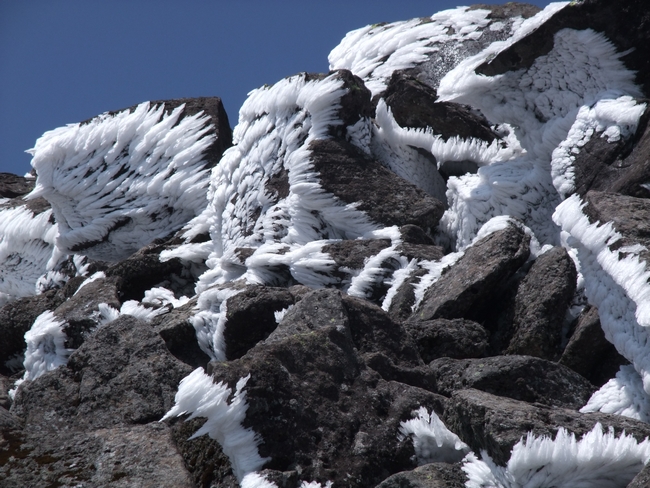
7:30 am was a late start. The first ropeway at this time of year was not until 9 am, although during the festival in July, it runs from a crisp 4:30 am. Walking added another 800 meters of ascent, but was still the quicker option. Immediately beyond the start of the forested trail, a cluster of dilapidated, abandoned houses were quietly being enveloped by nature. Large stone platforms, once perfectly constructed to form flat foundations, were crumbling and now covered by succulent mosses. The sponge bed of soft pine-needle branch ends, snipped off by the birds during the winter to eat the tender flesh within, was kind on the feet while the trees provided welcome shade.
Once above the main Joju temple, I passed one pilgrim dressed all in white, but wearing nothing better than soft-soled Nike trainers. He would struggle on the remnants of the snow that were clearly visible on the massive, steep rock flank of Ishizuchi. Somewhat higher up, a rather better equipped old man explained that he had climbed the mountain every April for the last 17 years, but at 70 years old, it was getting harder and he had failed last year due to snow. The peak of Ishizuchi, although not technical, was sufficiently steep to produce a surge of adrenalin, for I do not cope well with heights. If Hana bounded too far up the rock slabs, it was a very long drop over the precipice. I could occasionally hear her claws scrabbling for grip, her front legs splayed wide as she slid back down the slabs. On the descent, we reached the old man at a short traverse across a snow slope, whereupon he decided to abandon again.
I was tired. Accumulated tiredness, sore muscles, and beginning to doubt whether I could string together multiple peaks on successive days. I hesitantly suggested to Kin that we could simply return to Honshu, and enjoy a couple of days of sightseeing and onsens. Perhaps even stay at nice hotels, rather than a tent in concrete carparks. “Absolutely not,” she retorted. “This is a trial, and whether you fail or succeed, you won’t learn unless you try.” She’s tough when I need it most.
So, during the long drive to Tsurugi, with 42 kilometers of narrow mountain road passing through dying villages, I drank a bottle of Zero Coke and took an Amino Vital sachet. By the time I set off from the empty carpark of Tsurugi, with the mist coming down, the wind picking up strength and the drizzle turning to rain, I didn’t care. I felt like I had drunk a rocket. An absolute high, no trace of leg fatigue. We were up and down within one hour. If a hobby hiker can feel like this on just 300-yen’s worth of legal substances picked up from a convenience store, I can understand why, according to one survey, approximately 50% of professional athletes would take drugs if doing so guaranteed them Gold, but that they would then die after 5 years.













